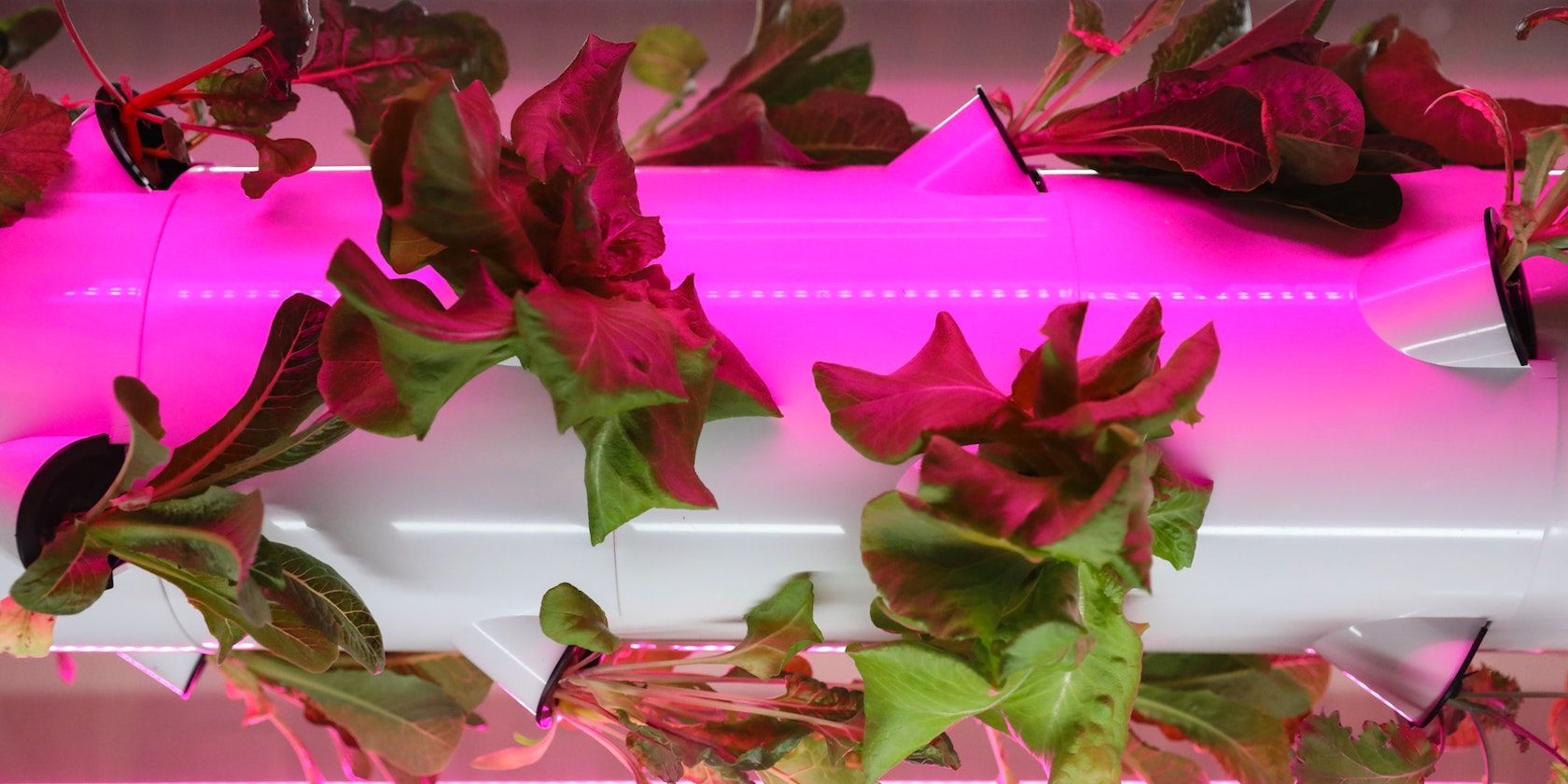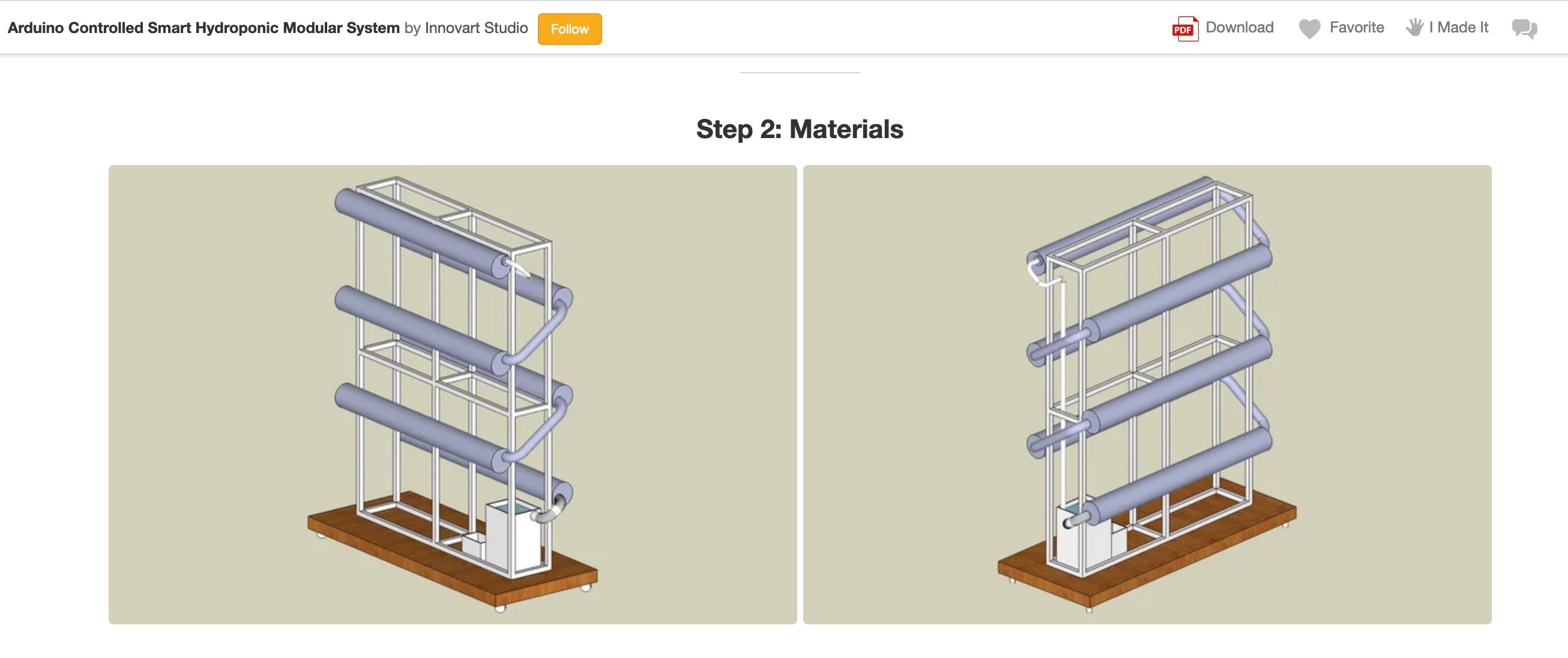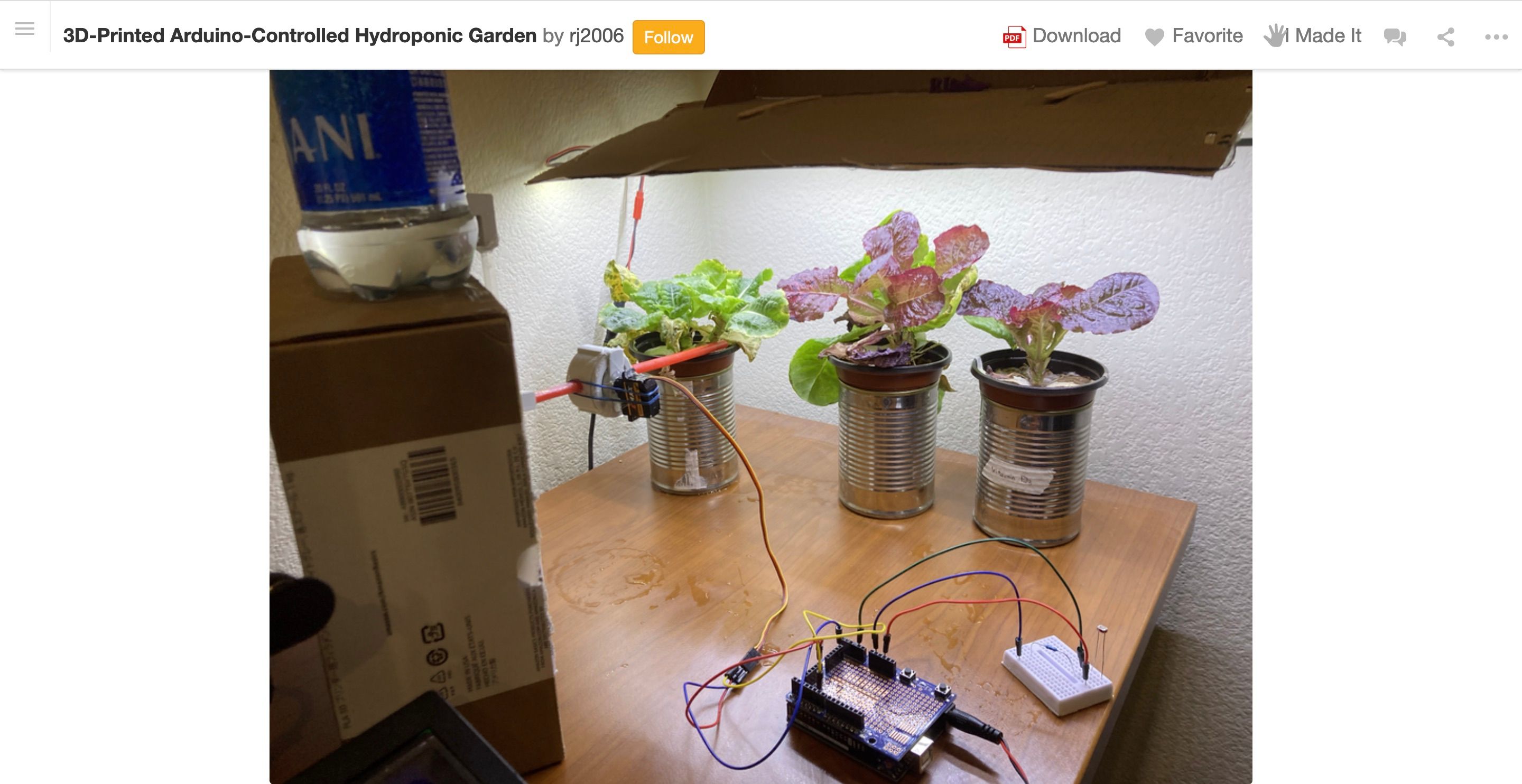Hydroponics is an exciting field of horticulture that lets you grow plants without dirt. But when replacing soil with a water system and liquid nutrients, it can get a little complicated trying figure out what the right balance is to maintain healthy plants.
That's where using a microcontroller can really improve the system. With an Arduino, Raspberry Pi, or both, you can automate your hydroponic system to do most of the heavy work for you.
1. Modular Arduino Hydroponic System
This hydroponic system was built as part of a school project and features a modular and open source design. Programmed using an Arduino Mega, it can automate the lighting, water cycles and the nutrient feeding. If that isn't enough, this system will also help you to measure and record data so that you know exactly when your plants need care.
You can take a look at the schematics on Instructables to get an in-depth overview of how this system is built. Essentially, it consists of multiple PVC pipes fitted to an aluminum frame, with each pipe drilled to fit a pot. A constant flow of water is cycled through the system to add oxygen, and a modified fish feeder is used to release nutrients to the plants.
Alongside numerous sensors to help measure the plants' status, it can also send the data to a web server via Wi-Fi. It's a well-thought-out Arduino hydroponic project, and great for scaling up or down depending on your needs.
2. Arduino and Raspberry Pi Vertical Hydroponics
Many hydroponic systems use PVC pipes, and in this project they are arranged vertically instead of horizontally. The project is easily movable (no dirt, no mess), so the whole system can even be brought inside during the winter and lit up with LEDs. Details about this project can be found on Instructables, including how different controls are split across multiple Arduino boards.
If you're looking for another board to add to your project, you can start by exploring the different types of Arduino microcontrollers to get a handle on what's out there.
Nicknamed ClimateBot, PharmaBot, and HydroBot, the Arduinos used in this project control different components such as lighting, temperature, water cycles, and nutrient release. In order to coordinate all this information, the Arduinos communicate with a Raspberry Pi.
In a custom-built app, you can interact with the Raspberry Pi to view, store, or control the data. In addition, if something goes wrong with the system, a notification will be sent to you.
3. The Ultimate Automated Hydroponic System With Raspberry Pi
With a Raspberry Pi, you have the ability to create a fully automated hydroponic system that can do anything you could possibly want. For Kylie Gabriel, the maker behind this project, that includes a DIY hydroponic system that has live video camera footage.
To dig into the project files, you can go to Kyle Gabriel's website. While the hydroponic system is much the same as others, built with PVC pipes, it's his custom-built open-source software called Mycodo that really stands out. You can access the Raspberry Pi using this software, and build a visual interface for all your sensors using widgets.
The custom-built software gives you even greater control over your hydroponic system, including being able to adjust timing schedules and feed quantities. It's a brilliant project that can do a lot if you've got the time to invest in the build.
4. Small Arduino Hydroponic Prototype
Hydroponic systems can be a big undertaking; for something a bit smaller, this project might be better. Detailed on Instructables, it is designed to feed a few small pot plants, which is great if you live in an apartment and don't have a lot of space. It also uses much smaller components that won't require electronic tools or PVC pipes.
You won't need a water pump here: instead, the watering system is built from a plastic water bottle and some straws. While the creator points out it's definitely a work-in-progress, it still makes for a great little starter project to get you thinking about hydroponics.
To tie it all together, a few 3D printed parts are designed to connect the straw pipes. 3D modeling is a fun and practical skill to get into, so if you're interested in learning more about the process, here is our pick for the best 3D printing courses.
Additionally, you will need an Arduino to control the flow of water via an actuator, and a wall timer for the LED lights. Overall, it's a fairly simple idea that would work great as a miniature hydroponics prototype for later designs.
5. Automated Hydroponics With Raspberry Pi, Arduino, and Home Assistant
DIY hydroponic systems can be a lot of fun to customize. If some large projects seem daunting, just remember that you don't need to build the entire system. Instead, you can use it as inspiration for the kind of functions you want to incorporate into your design.
This project is especially brilliant if you need more ideas for your own hydroponic setup. At its heart it uses an Arduino and various sensors to measure water, nutrients, humidity, and more. All the information is then sent to a Raspberry Pi which is connected to a free home automation software called Home Assistant, allowing you to visualize all of your data. Check out our Home Assistant installation guide.
Some awesome features of this project include remote-controlled magnets to stir the nutrient liquid, and moisture sensors that will alert you if there is water leaking from the system. This design has a ton of things going on in the electronics, which is perfect if you're looking for some ways to upgrade your own hydroponic design.
Gardening With Raspberry Pi and Arduino
Building your own automated DIY hydroponic system will no doubt save you money when compared with commercial products. But what's even better is having complete control over the size, function, and design of your system.
There's no doubt that hydroponics and electronics are a natural match, and one of these projects will be sure to get you inspired.



